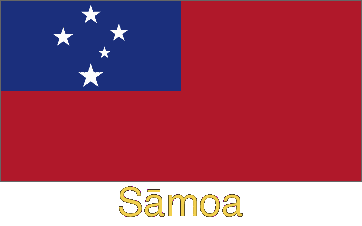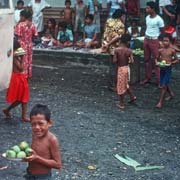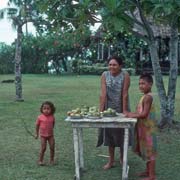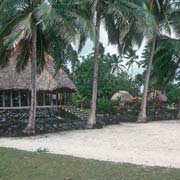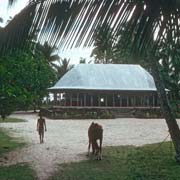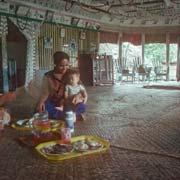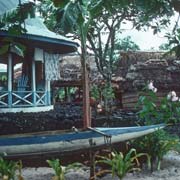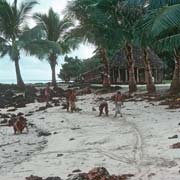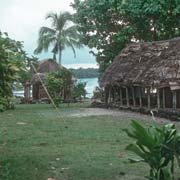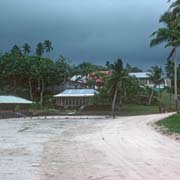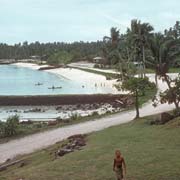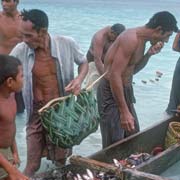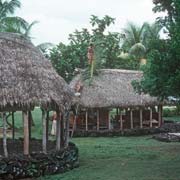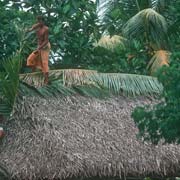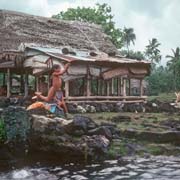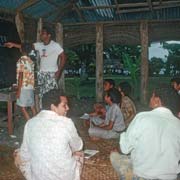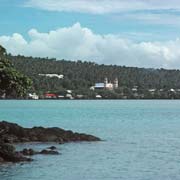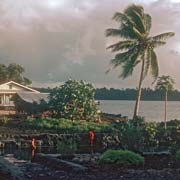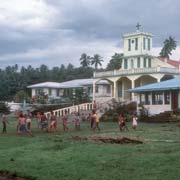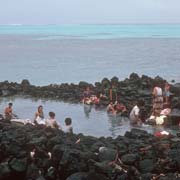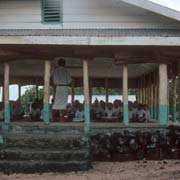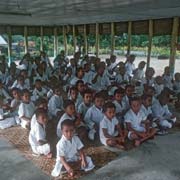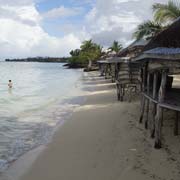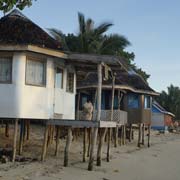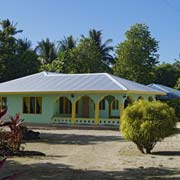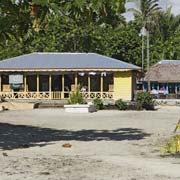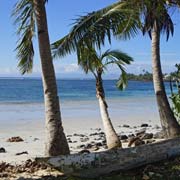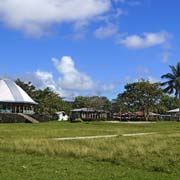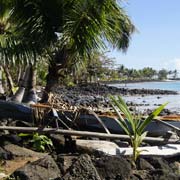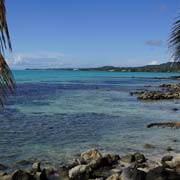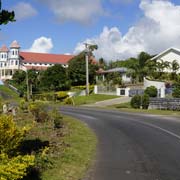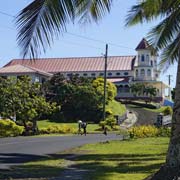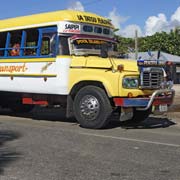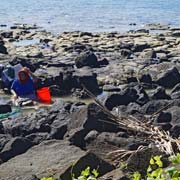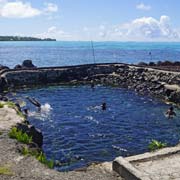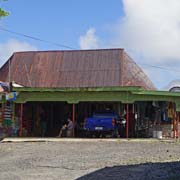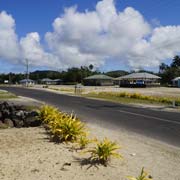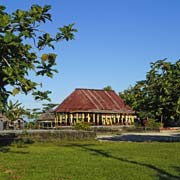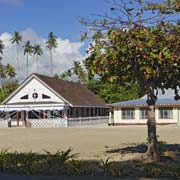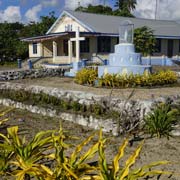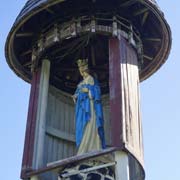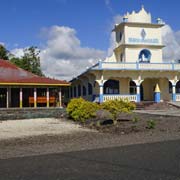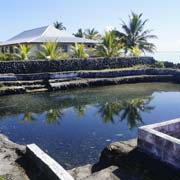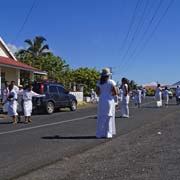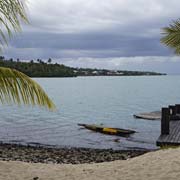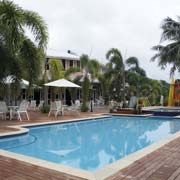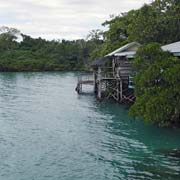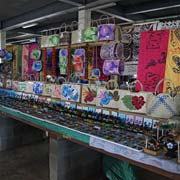Photos of the east coast of Savai'i, the largest island, Samoa
The east coast of Savai'i, the largest island
Savai'i is the largest island in the Samoan islands and is, in fact larger than all the other islands (including American Samoa) put together. It has an area of 1700 km² and a population of almost 45,000 people.
you may then send it as a postcard if you wish.
The only township on the island is Salelologa, where the ferry from Upolu island is situated; it has a shopping street, a hotel (the Jet Over Hotel) and a friendly guest house, Lusia's Lagoon Chalets; a new market has been constructed in 2009, a little away from the "town centre".
A good bitumen road circles the island and colourful private buses go to the villages along the coast. Going anticlockwise, one of the first villages is Sapapali'i, where in 1830 the Rev. John Willams of the London Missionary Society brought Christianity to the islands; judging by the enormous churches in every small village you pass, he was spectacularly successful. The large open meeting houses are still very much in evidence but over the years the coconut leaf roofs have been mostly abandoned in favour of corrugated iron roofs that are easier to maintain. Similarly, the family fale, open on all sides now also is mainly roofed with iron and there are more houses in "palagi" (European) style.
Whereas the only places to stay used to be with families in their fales (Samoan hospitality is legendary) there are now a few simple places along the coast to stay for travellers. There is family-run "beach fale" accommodation, where you may stay in a small traditional open fale (with coconut-leaf mats that can be lowered for privacy or protection when it rains) and a mattress on the floor or, slightly more upmarket, in a beach shack with a real bed. There is a cluster of these along the beach in Lano, between the villages of Sa'asa'ai, Saipipi and Pu'apu'a, peaceful villages along the east coast of Savai'i.


